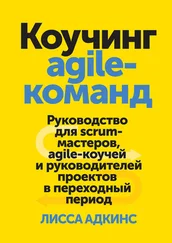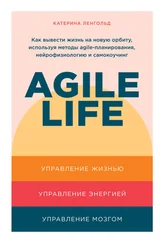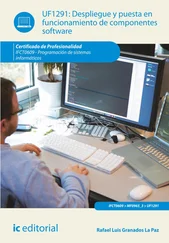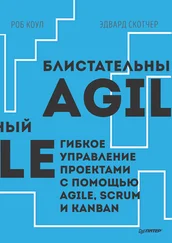What characterizes intellectual activity, over and beyond activity that is merely intelligent, is the person's building and having a theory, where theory is understood as the knowledge a person must have in order not only to do certain things intelligently but also to explain them, to answer queries about them, to argue about them, and so forth. A person who has a theory in prepared to enter into such activities; while building the theory the person is trying to get it.
The notion of theory in the sense used here applies not only to the elaborate constructions of specialized fields of enquiry, but equally to activities that any person who has received education will participate in on certain occasions. Even quite unambitious activities of everyday life may give rise to people's theorizing, for example in planning how to place furniture or how to get to some place by means of certain means of transportation.
The notion of theory employed here is explicitly not confined to what may be called the most general or abstract part of the insight. For example, to have Newton's theory of mechanics as understood here it is not enough to understand the central laws, such as that force equals mass times acceleration. In addition, as described in more detail by Kuhn [1970, p. 187ff], the person having the theory must have an understanding of the manner in which the central laws apply to certain aspects of reality, so as to be able to recognize and apply the theory to other similar aspects. A person having Newton's theory of mechanics must thus understand how it applies to the motions of pendulums and the planets, and must be able to recognize similar phenomena in the world, so as to be able to employ the mathematically expressed rules of the theory properly.
The dependence of a theory on a grasp of certain kinds of similarity between situations and events of the real world gives the reason why the knowledge held by someone who has the theory could not, in principle, be expressed in terms of rules. In fact, the similarities in question are not, and cannot be, expressed in terms of criteria, no more than the similarities of many other kinds of objects, such as human faces, tunes, or tastes of wine, can be thus expressed.
The Theory to be Built by the Programmer
In terms of Ryle's notion of theory, what has to be built by the programmer is a theory of how certain affairs of the world will be handled by, or supported by, a computer program. On the Theory Building view of programming the theory built by the programmers has primacy over such other products as program texts, user documentation, and additional documentation such as specifications.
In arguing for the Theory Building View, the basic issue is to show how the knowledge possessed by the programmer by virtue of his or her having the theory necessarily, and in an essential manner, transcends that which is recorded in the documented products. The answers to this issue is that the programmer's knowledge transcends that given in documentation in at least three essential areas:
1) The programmer having the theory of the program can explain how the solution relates to the affairs of the world that it helps to handle. Such an explanation will have to be concerned with the manner in which the affairs of the world, both in their overall characteristics and their details, are, in some sense, mapped into the program text and into any additional documentation. Thus the programmer must be able to explain, for each part of the program text and for each of its overall structural characteristics, what aspect or activity of the world is matched by it. Conversely, for any aspect or activity of the world the programmer is able to state its manner of mapping into the program text. By far the largest part of the world aspects and activities will of course lie outside the scope of the program text, being irrelevant in the context. However, the decision that a part of the world is relevant can only be made by someone who understands the whole world. This understanding must be contributed by the programmer.
2) The programmer having the theory of the program can explain why each part of the program is what it is, in other words is able to support the actual program text with a justification of some sort. The final basis of the justification is and must always remain the programmer's direct, intuitive knowledge or estimate. This holds even where the justification makes use of reasoning, perhaps with application of design rules, quantitative estimates, comparisons with alternatives, and such like, the point being that the choice of the principles and rules, and the decision that they are relevant to the situation at hand, again must in the final analysis remain a matter of the programmer's direct knowledge.
3) The programmer having the theory of the program is able to respond constructively to any demand for a modification of the program so as to support the affairs of the world in a new manner. Designing how a modification is best incorporated into an established program depends on the perception of the similarity of the new demand with the operational facilities already built into the program. The kind of similarity that has to be perceived is one between aspects of the world. It only makes sense to the agent who has knowledge of the world, that is to the programmer, and cannot be reduced to any limited set of criteria or rules, for reasons similar to the ones given above why the justification of the program cannot thus be reduced.
While the discussion of the present section presents some basic arguments for adopting the Theory Building View of programming, an assessment of the view should take into account to what extent it may contribute to a coherent understanding of programming and its problems. Such matters will be discussed in the following sections.
Problems and Costs of Program Modifications
A prominent reason for proposing the Theory Building View of programming is the desire to establish an insight into programming suitable for supporting a sound understanding of program modifications. The question will therefore be the first one to be taken up for analysis.
One thing seems to be agreed by everyone, that software will be modified. It is invariable the case that a program, once in operation, will be felt to be only part of the answer to the problems at hand. Also the very use of the program itself will inspire ideas for further useful services that the program ought to provide. Hence the need for ways to handle modifications.
The question of program modifications is closely tied to that of programming costs. In the face of a need for a changed manner of operation of the program, one hopes to achieve a saving of costs by making modifications of an existing program text, rather than by writing an entirely new program.
The expectation that program modifications at low cost ought to be possible is one that calls for closer analysis. First it should be noted that such an expectation cannot be supported by analogy with modifications of other complicated man-made constructions. Where modifications are occasionally put into action, for example in the case of buildings, they are well know to be expensive and in fact complete demolition of the existing building followed by new construction is often found to be preferable economically. Second, the expectation of the possibility of low cost program modifications conceivably finds support in the fact that a program is a text held in a medium allowing for easy editing. For this support to be valid it must clearly be assumed that the dominating cost I one of text manipulation. This would agree with a notion of programming as text production. On the Theory Building View this whole argument is false. This view gives no support to an expectation that program modification at low cost are generally possible.
Читать дальше










